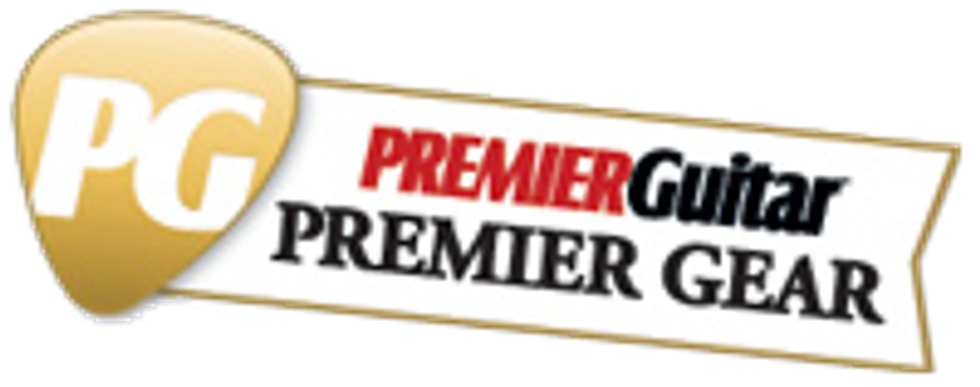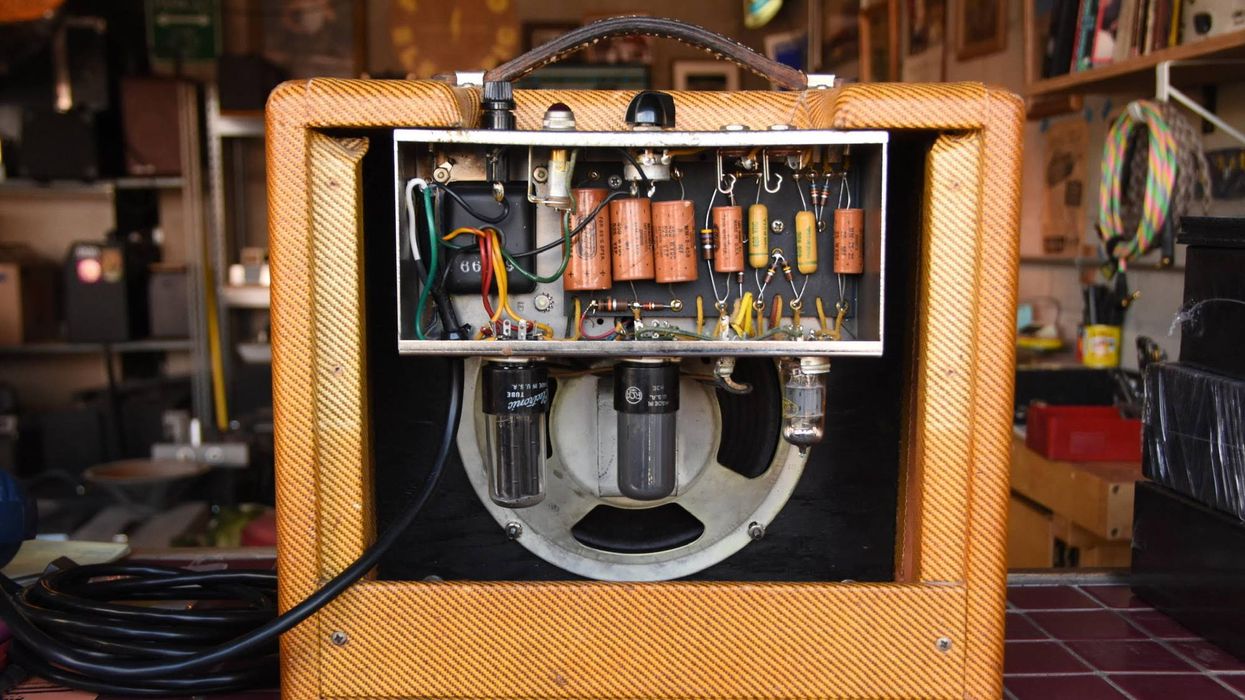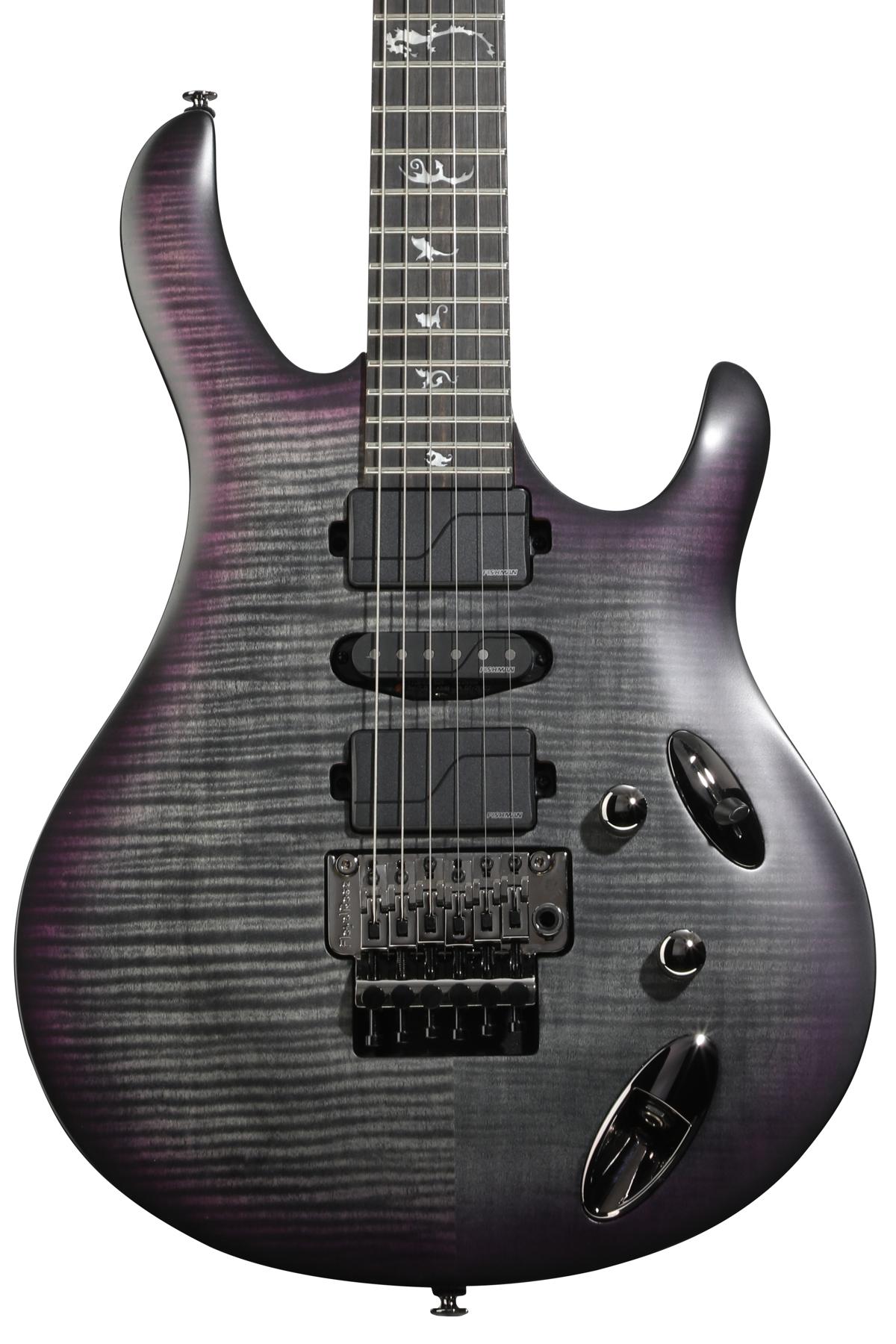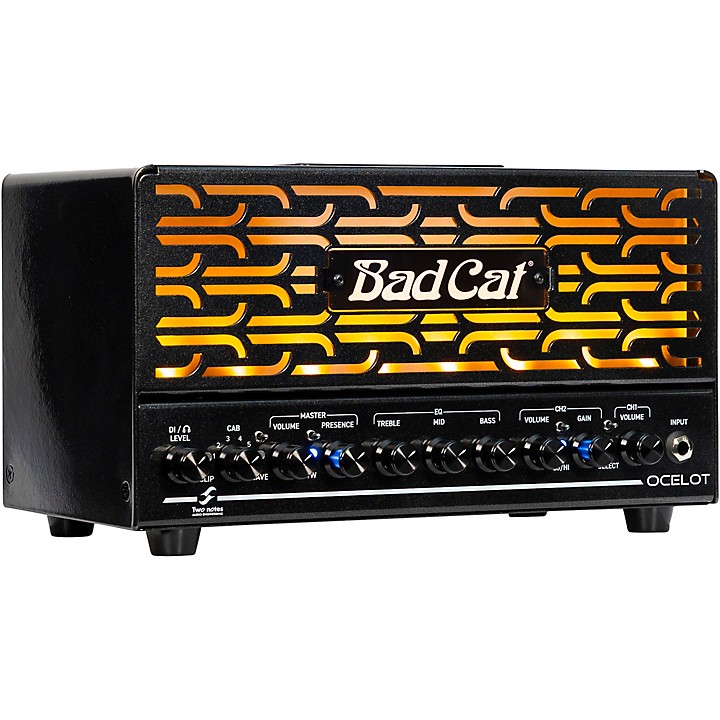Considering how cool baritone guitar can sound—taut, gut-punching low end in the first few frets, and standard-tuning treble and midrange higher up the neck—it’s dumbfounding how few of these specialized 6-strings are on the market, especially at an affordable price. Thankfully, this is changing. One of the most recent outfits to offer production-line access to this neglected niche is Reverend, and their Descent H90 Baritone puts these down-tuned joys in reach of those who can’t afford custom instruments.
Keeping the Faith
Reverend guitars and basses always seem to emerge from their shipping containers ready to rock. The Descent was no different. We opened the box and pulled it from its optional case, perfectly in tune. Pretty impressive considering the jostling and banging that happens in transit. Reverend’s typically impeccable fretwork and setup were also plain to see.
The Descent’s features are impressive too: a lightweight korina body, pin-lock tuners, a graphite nut, a two-post Wilkinson WVS50 IIK vibrato, and Railhammer Gnarly 90 bridge and Tel 90 neck pickups with alnico 5 magnets, a rail under the lower three strings, and traditional pole pieces under the treble strings. Tones are tweaked via a deceptively simple complement of master volume and tone knobs and Reverend’s trademark bass-contour control.
Doubting Thomases
While some gurus insist a true baritone should be at least 28" in scale to provide optimal string tension and intonation, the 26 3/4"-scale Rev’ intonated perfectly. Chords hung together harmonically up and down the neck, and there was more than enough snap and spank across the .012–.068-gauge strings. The B-to-B-tuned guitar also looks and feels so good in your hands that anyone used to 25.5" instruments and heavy strings might very well forget they’re playing an extended-range instrument.
I will confess, though, that before testing the Descent I was slightly skeptical—not just of the modern-looking hybrid pickups’ ability to deliver a lot of sonic nuance, but also of the bass-contour knob: On standard-scale Reverends I’ve found that this passive bass roll-off can complicate the process of getting sounds you’re anticipating across various pickup positions. But on the Descent—an instrument explicitly designed to serve up big bottom end—the bass-contour circuit can be downright magical.
Spelunking the Depths
To test the Descent, I plugged it into my pedalboard, and routed that to cranked Jaguar HC50 and Goodsell Valpreaux 21 amps. I dimed the guitar’s knobs, flicked the 3-way pickup selector to the bridge position, and hit a low-B power chord. The result was a brass-knuckled blow to the belly: massive, gristly low end of the sort you’d expect from the burlier P-90s on the market—not ringing, vintage P-90 tone with lots of high end, but beefy, almost humbucker-like output.
Initially this seemed to support my apprehensions about the Railhammers. But when I dialed the bass-contour control knob back a notch the sound morphed from a lardaceous, ham-fisted weapon to a leaner kind of brawniness. Dialing it back shaved off low end until I was left with a mean tone shiv not unlike what you’d hear from a blade-humbucker-equipped Tele. In the bridge position, the Descent could go from meaty hard-rock vibes to Southern rock sounds, and quasi-Danny Gatton snap and twang with the mere twist of a knob. The contour knob affects so many frequencies (and therefore overall output) that you can even use it as a fat boost for solos rather than just a voice-selector.
Ratings
Pros:
Fantastic build, setup, and hardware. Great tuning stability. Light weight. Incredible range of fat to switchblade-sharp tones.
Cons:
Only two finish options. Tone selection not as simple as it seems.
Tones:
Playability:
Build/Design:
Value:
Street:
$999
Reverend Descent H90 Baritone
reverendguitars.com
Switch to the middle- or neck-pickup position, and the results are just as wide-ranging and tonally transformative—although the neck pickup has much more clarity than the bridge unit. With a little amp grit, I was able to find deep-throated in-between sounds in the vein of Page on a subterranean version of “No Quarter,” or thick, rich, and chiming sounds for hybrid- or Travis-picked rockabilly lines as I dialed out the dirt.
Devil in Disguise
So far we’ve only scratched the surface of the Descent’s possibilities, because the bass-contour control is only half the story: Unlike most master-tone knobs, the Descent’s doesn’t just gradually roll off high end as you dial it back. Full stop, it has a balance of treble, mids, and bass, but as you dial it back, more mid and low-mid content is removed than treble. Halfway through its range, you get a scooped sound that still sparkles. With both pickups selected, tone and contour knobs around their midpoint, and a clean-ish sound, you get a response that’s a lot like the “out-of-phase” 2 and 4 positions from a Stratocaster.
The Rev’s tone knob does become more bass heavy as you approach full-counterclockwise position, but even here there’s more treble than you’d hear on similarly adjusted instruments. That can make it difficult to find some of the smokier neck-pickup jazz sounds some might hope for. But the way the tone and contour controls dynamically interact expands the Descent’s voicings way beyond what you’d expect. For instance, with the neck pickup selected, and tone and contour all the way down, palm-muted riffs on the low B yield lovely, tic-tac-style bass lines with a lot of the warm, vintage-y personality of a Danelectro 6-string bass or Fender Bass VI. Bring the contour control up toward max, and you can easily pull off fat P-bass-ish lines, too.
The Verdict
While some players might yearn for simpler, more predictable functionality, the dynamic interplay of the Reverend Descent H90’s tone and bass-contour controls is a real asset. In fact, the quality of build, tones, and features is so high—and, more importantly, so versatile—that it very well may be the most flexible production-line baritone on the market. Given this and its very reasonable price, it’s virtually a no-brainer for anyone lamenting the dearth of available baritones.
Watch the Review Demo:













![Rig Rundown: Russian Circles’ Mike Sullivan [2025]](https://www.premierguitar.com/media-library/youtube.jpg?id=62303631&width=1245&height=700&quality=70&coordinates=0%2C0%2C0%2C0)







